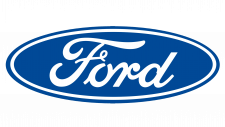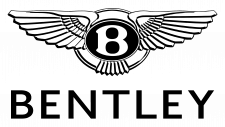Ram Logo
Ram, now a standalone brand, specializes in producing trucks and commercial vehicles, synonymous with rugged reliability and strength. It primarily serves the North American market, catering to consumers seeking durable and powerful vehicles. Currently, Ram operates under the stewardship of Stellantis, a multinational automotive manufacturing company, resulting from the merger of Fiat Chrysler Automobiles and PSA Group in 2021. The brand continues to focus on innovation and quality, ensuring its offerings meet the evolving needs of its diverse consumer base.
Meaning and history
The Ram brand, recognized for its robust trucks, originated as a model under the Dodge marque. The Dodge brothers, John and Horace, founded Dodge in the early 1900s, primarily focusing on auto parts. However, transitions and transformations marked its journey. In 1928, it integrated into Chrysler Corporation, marking the start of a long association. Over the decades, Ram evolved, with the 1981 release of the Ram and Power Ram as rebranded versions of the Dodge D Series.
In 2009, amid restructuring, Fiat acquired Chrysler, leading to the formation of Fiat Chrysler Automobiles (FCA). This move saw Ram’s emergence as a separate, dedicated truck brand, allowing focused innovation and design in the truck segment. This separation aimed at accentuating Ram’s distinct identity and meeting diverse consumer needs effectively.
The brand’s trajectory underwent another significant shift in 2021, when FCA merged with PSA Group, culminating in the formation of Stellantis, a global auto-manufacturing leader, currently overseeing Ram. Despite ownership transitions, Ram remains steadfast in its commitment to delivering reliable, high-performance trucks, maintaining its essence amid evolving industry landscapes.
1914 – 1969
The emblem is verbose, containing solely the phrase “Dodge Trucks.” It’s arranged in a single row, utilizing a distinctive blocky typeface. The spacing between the letters is compact, while the separation between the words is expansive. Every letter is individually stylized. The “D” features flat serifs extending to the left. Both “O” and “G” are mirror images, resembling square shapes devoid of serifs. The middle bar of the “E” extends horizontally, giving it the appearance of a rightward-facing trident. “U” and “C” mirror each other, appearing as broad staples, oriented in opposing directions. This logo employs stark black lettering contrasted against a pristine white backdrop, a choice that ensures immediate visual engagement. The array of unconventional letter designs in this logo denotes a sense of uniqueness and leaves a striking impression, serving to distinguish the brand in a highly competitive market. The use of such distinctive typography aligns well with the brand’s ethos of innovation and individuality, reflective of its enduring commitment to delivering products that stand out in terms of design and performance.
1969 – 1993
Post-redesign, the emblem has been segmented into three portions. The topmost rectangle houses a pentagon, centering a slender star. Each ray of this star extends to a distinct corner. Below, inscribed against a similarly black backdrop, is the complete name of the company, “Dodge Trucks.” The characters here are bold, vertically elongated, stencil-styled, and devoid of serifs. A white rectangle separates the black ones, wherein the brand’s name is succinctly rendered as “Dodge.” These characters are broader compared to their predecessors, adopting a blocky appearance. The inscription is a mixture of uppercase and lowercase letters.
The transformation in logo signifies a blend of tradition and modernity, adapting to contemporary aesthetics while retaining the brand’s essence. Each segment of the logo reflects a facet of the company’s identity, integrating a sense of boldness and precision. The distinct segments of the logo also seem to emphasize the versatility and diverse range of the brand’s offerings. The amalgamation of different typefaces and styles within the same logo conveys a dynamic and adaptable brand personality, showcasing Dodge’s capability to evolve and resonate with varying consumer preferences and market trends. The meticulous arrangement of elements within the logo harmonizes the overall visual appeal, making it an enduring symbol of the brand’s legacy and its forward-looking vision.
1993 – 2009
Throughout the developmental phases of the second and third generations of Ram Trucks pickups, modifications were made to both the emblem and the designation, evolving into Dodge Ram. However, this was the designated title of the trucks manufactured in 1981. These were the revamped Ram and Power Ram, successors to the Dodge D-Series. The brand’s distinct name was inspired by the ornamentation on the hood. The imposing depiction of a ram’s head with curved horns first adorned Dodge vehicles in the 1930s. The creature is positioned prominently, emitting a formidable side glance, its expansive horns leading the way. Additionally, the representation of the ram is layered: one is red (outer), and the other is white (inner), emanating from the negative space. Below, the term “Ram” is depicted in pillar-like characters.
The iconic ram symbol conveys a sense of strength and durability, aligning with the brand’s commitment to producing robust and reliable vehicles. This emblematic feature has become synonymous with the resilience and performance of the vehicles, reinforcing the brand’s image in the automotive industry. The contrast between the red and white layers adds a dynamic visual element, enhancing the emblem’s overall impact. The evolution of the logo and name is indicative of the brand’s continual refinement and adaptation, reflecting its dedication to innovation and quality. The strategic integration of historical elements with modern design sensibilities illustrates Dodge Ram’s reverence for its heritage while embracing advancements in automotive design and technology. The columnar representation of the “Ram” wordmark fortifies the brand’s identity, embodying its foundational values and forward-thinking approach.
2009 – Today
Maintaining the typographic aesthetic, the creators embarked on a comprehensive overhaul of the visual components. The emblematic shield and the representation of the ram remained intact, albeit with modifications in their structuring. Presently, a metallized, three-dimensional ram’s head, exhibiting a gradient transitioning from pale grey to a deep lead hue, emerges prominently from the hood of the Ram Trucks. The expert interplay of shadow and illumination conjures an illusion of depth and dimension. Notably, these elements are not interspersed haphazardly but are orchestrated in a meticulous, almost reflective arrangement. The head coupled with the expansive horns comprehensively inhabit the internal confines of the metallized shield, enriched by a three-dimensional border.
This transformation in design emphasizes a more modern and dynamic aesthetic, aligning with the brand’s innovative spirit and commitment to sophistication and detail. The enhanced visual elements not only enrich the logo’s appearance but also accentuate its symbolic significance, reflecting strength, reliability, and progressive design. The meticulously arranged shadows and highlights, along with the strategically placed metallic elements, contribute to a seamless integration of realism and artistry, reinforcing the brand’s identity in the evolving automotive landscape. The revamped design successfully encapsulates the essence of Ram Trucks, merging traditional values with contemporary design principles to resonate with diverse consumer preferences.
2023 – Today
The emblem unveiled in 2023 features the term “RAM” in a stark black hue. Owing to the obscure, compressed typeface, the script subtly alludes to horns, although such correlations are rather subdued. Every single letter is intertwined with the next, and concurrently, each one manifests a diminutive triangular cut at the upper right quadrant. This imparts a sense of dynamism to the brand insignia, particularly notable considering the conspicuous absence of the customary horizontal bars in the “R” and “A.”
This logo’s innovation lies in its subtle implications and distinct typography, offering a fresh perspective on brand representation. The interconnected letters and subtle notches generate a fluid yet robust visual impact, allowing the brand to communicate its essence without overt reliance on explicit symbols or imagery. The strategic nuances in design reflect a meticulous approach to brand evolution, ensuring that every element resonates with the intrinsic values and forward-thinking ethos of the RAM brand. The subtle horn representation encapsulates the brand’s foundational spirit, embodying resilience and vigor while remaining understated in its expressiveness. The choice of black accentuates the logo’s boldness, fortifying its presence amidst evolving automotive branding landscapes.
















